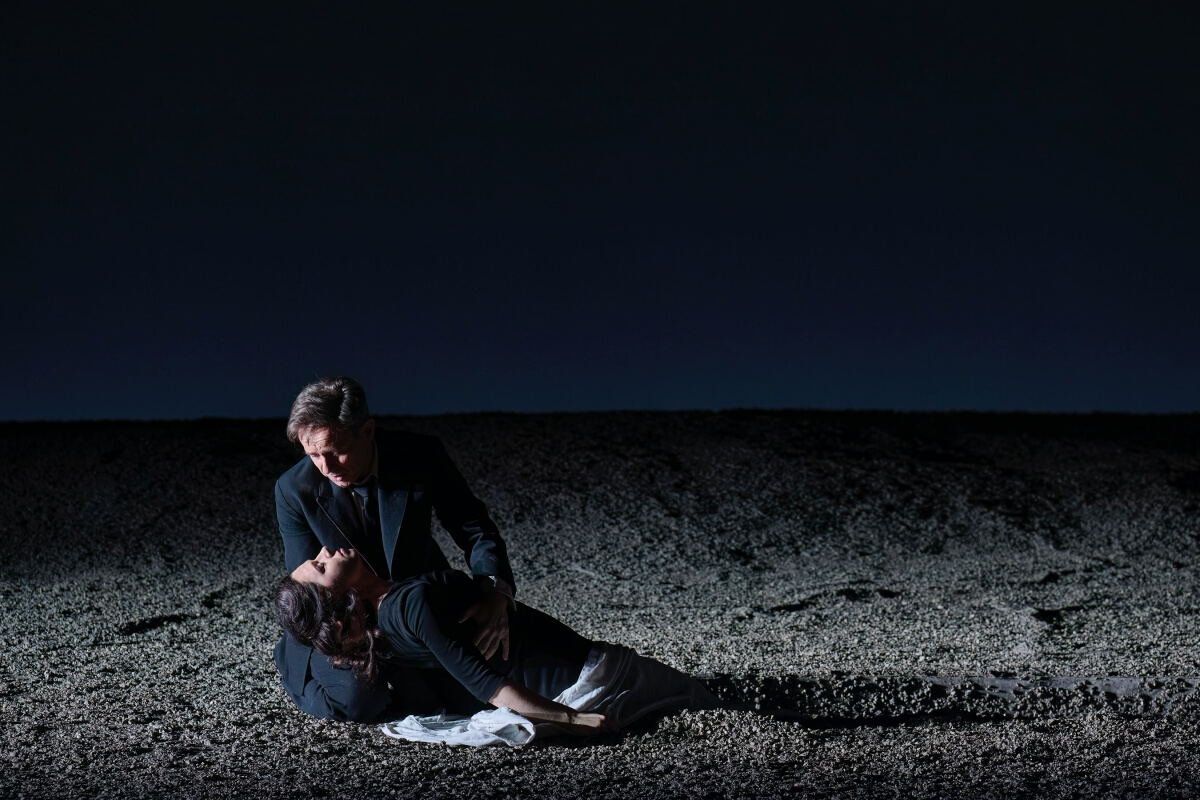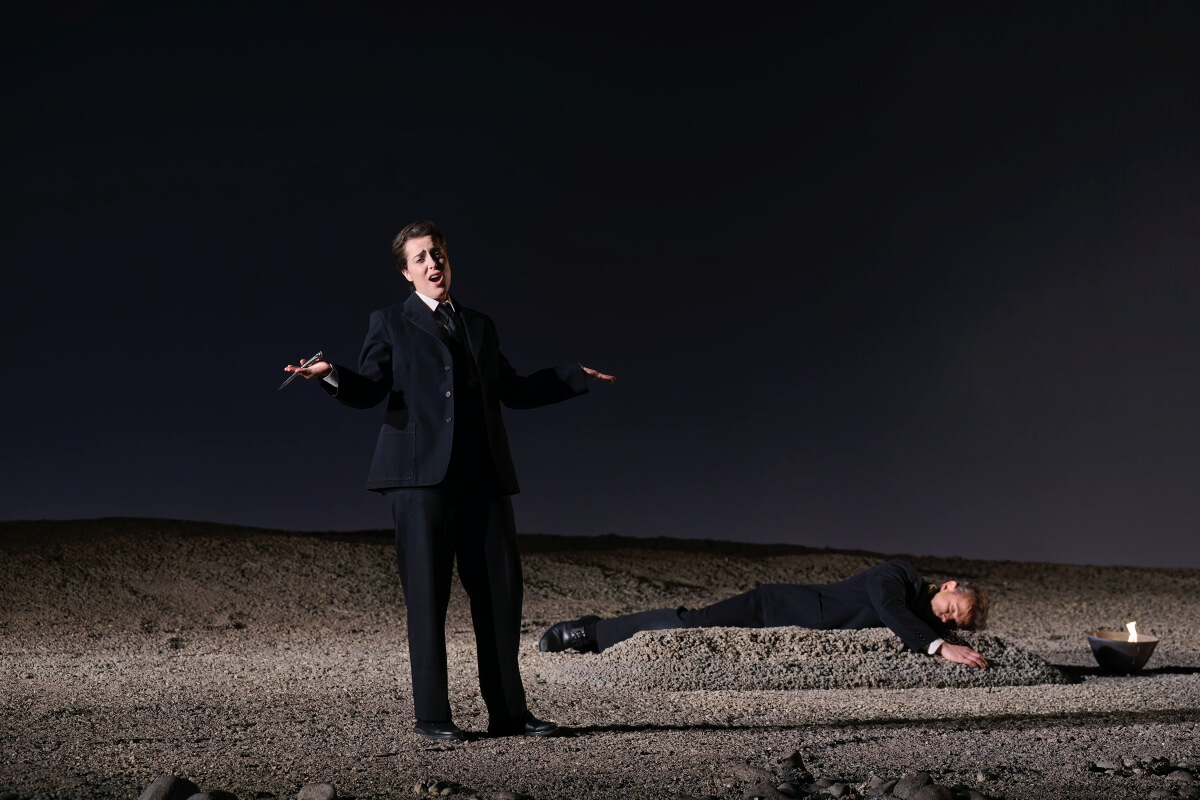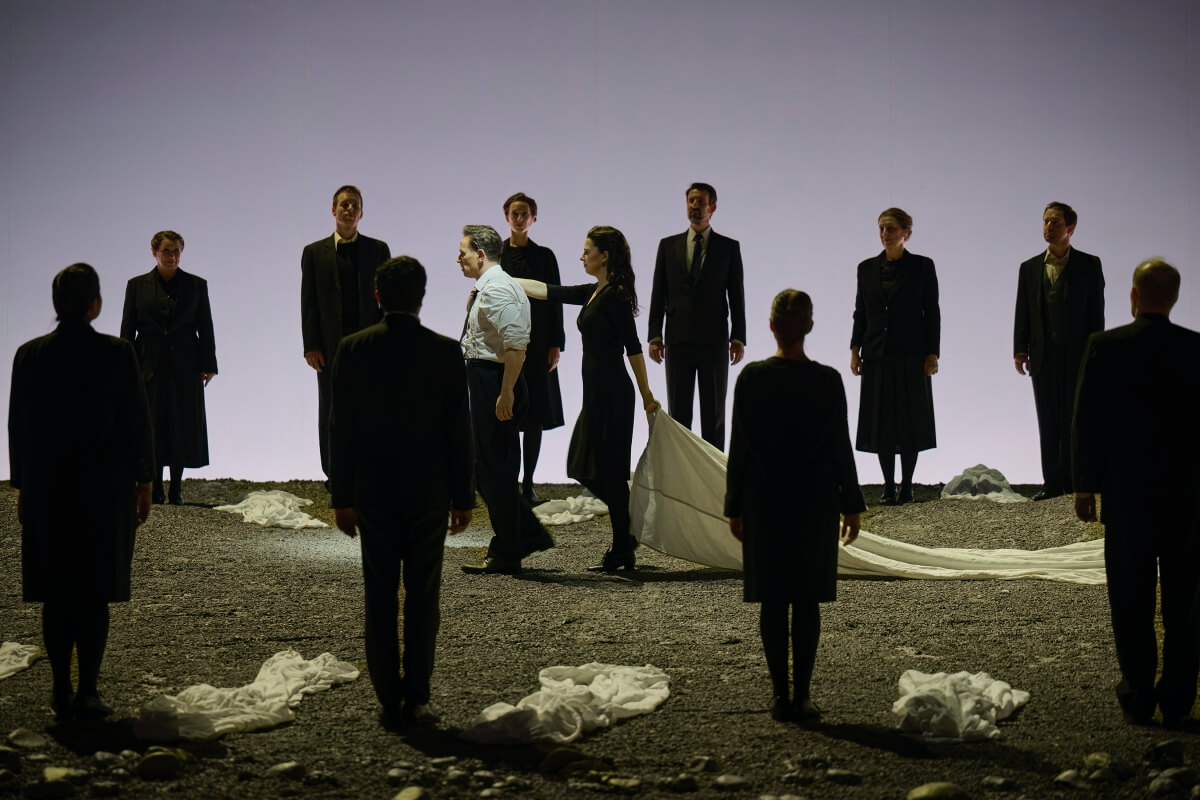Canadian Opera Firm/Théâtre des Champs-Elysées, Fondazione Teatro dell’Opera di Roma, Opéra Royal Château de Versailles Spectacles, and Lyric Opera of Chicago — Gluck: Orfeo ed Euridice. Bernard Labadie, Conductor; Robert Carsen, Unique Director & Lighting Designer; Christophe Gayral, Revival Director, with Iestyn Davies (Orfeo); Anna-Sophie Neher (Euridice); Catherine St-Arnaud (Amore). October 9, 2025, 4 Seasons Centre for the Arts. Continues till October 25, 2025; tickets right here.
A minimalist staging for Gluck’s stripped-down opera is sort of too apparent a selection. With solely three principal roles, this primary reform opera already makes a manifesto of changing the ornate with the important — each musically and dramatically.
Canadian Robert Carsen’s tried-and-tested manufacturing, first mounted in Chicago in 2006, goes additional in its abstraction, stripping down each the legendary setting and, maybe extra frustratingly, most of its physicality, specifically dance.

The Manufacturing
Carsen’s idea usually coheres properly. The visible world unfolds in restrained monochromes — shades of gray for the realm of the residing, black with glints of orange for Hades, and a darkish, melancholy blue for Elysium. The dim lighting permits for a putting play of shadows, significantly efficient within the portrayal of the refrain, with silhouettes of mourners within the opening scene, and later the Blessed Spirits frozen in sculptural poses behind Orfeo’s surprise.
Costumes are fashionable, but timeless: males in easy fits, girls in sombre village attire, some with scarves, harking back to Zorba the Greek — besides that these girls are way more restrained.
Uncooked feelings are left to the leads. Carsen’s Orfeo isn’t any legendary musician however an Everyman mourning the lack of his spouse. As such, the main target shifts from the ability of music to the ability of affection — a selection that goes some method to justifying the opera’s somewhat banal glad ending.
In Orfeo’s encounter with the Furies, it isn’t music however ardour that clears his path. Accordingly, he wields a flaming bowl somewhat than a lyre, and this literal hearth of affection renders the offstage harp considerably redundant. The scene is successfully nightmarish, the refrain’s livid “No!”s ringing out with visceral drive.
The transition to Elysium, although easy, feels distinctly unheavenly, because the Furies jitter from their cocoons to develop into the Blessed Spirits. A few of Carsen’s visually putting positioning of the refrain sadly serves to fragment their sound; within the opening scenes particularly, they appear under-powered, regardless of Bernard Labadie’s delicate and classy conducting and the Orchestra’s discretion.

Performances
The clean stage locations the onus on emotional fact, which British countertenor Iestyn Davies as Orfeo delivers with arresting depth. His rounded tone conveys each despair and tenderness, each phrase charged with humanity. His “Che farò senza Euridice?” is a masterclass in emotional gradation, starting from numb disbelief via pleading anguish to hole resignation.
As Euridice, Anna-Sophie Neher gives darkish, resonant tone and sincerity of presence, at instances recalling the grave dignity of Irene Papas (actress in Zorba). She does her finest to make sense of Euridice’s outbursts throughout her rescue scene, lending them real ache somewhat than petulance.
Amore stays a weak hyperlink. For all her vocal agility, Catherine St-Arnaud’s mild soprano lacks weight and penetration. Carsen’s thought — that she represents Orfeo’s unconscious — by no means fairly registers, and the gender shift, whereby she is first dressed as Orfeo, later as Euridice, feels extra arbitrary than revelatory.
Nor does the ultimate giddy tableau wholly persuade: Gluck himself appears tied once more to conference, and Carsen — resolutely against the inclusion of dance — doesn’t resolve the inherited drawback. One nearly needs, at that last refrain, for a cathartic Zorba-style tableau to interrupt the spell of tasteful restraint.
This system lists 4 actors and two dancers, however other than a last, somewhat symbolic lifting of the lovers, their contribution stays elusive. That absence, nevertheless, may very well be thought-about apt for a manufacturing that so rigorously pares again the whole lot to its essence — generally, maybe, an excessive amount of so.

Closing Ideas
Finally, Carsen’s Orfeo ed Euridice exemplifies the virtues of universality and practicality, a manufacturing refined sufficient to journey anyplace (because it has) and stay timeless.
But, amidst its measured self-discipline I discovered myself craving for extra risk-taking and magic, for a reckless leap of creativeness that may in some way pierce its polished floor. The austerity that fifty years in the past could have felt like radical renewal has now develop into a behavior.
Maybe the time has come to maneuver past minimalism for its personal sake.
Are you seeking to promote an occasion? Have a information tip? Have to know the perfect occasions occurring this weekend? Ship us a notice.
#LUDWIGVAN
Get the day by day arts information straight to your inbox.

